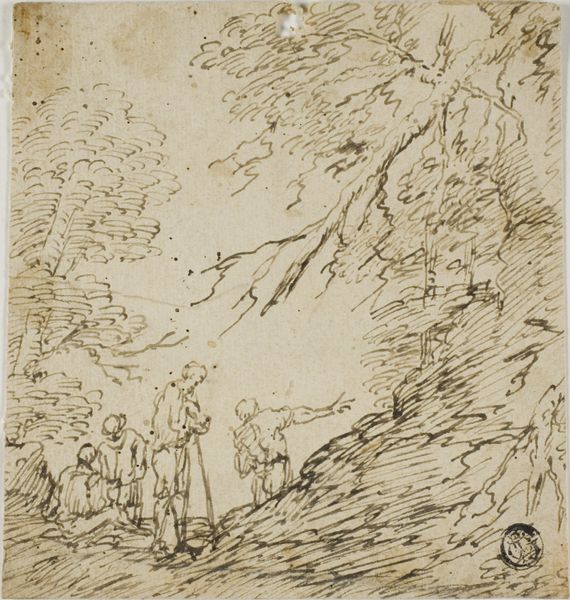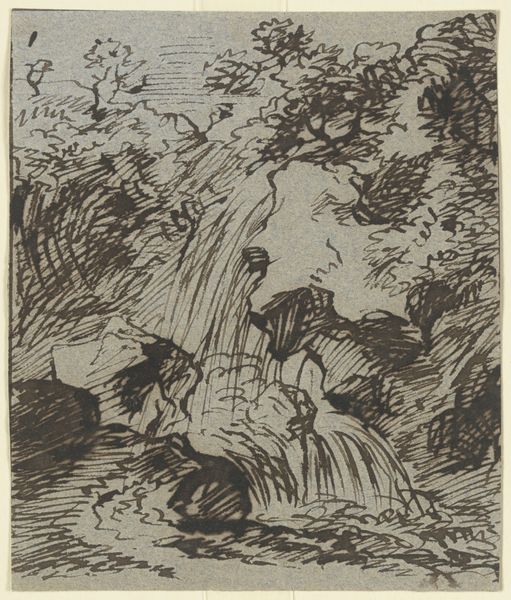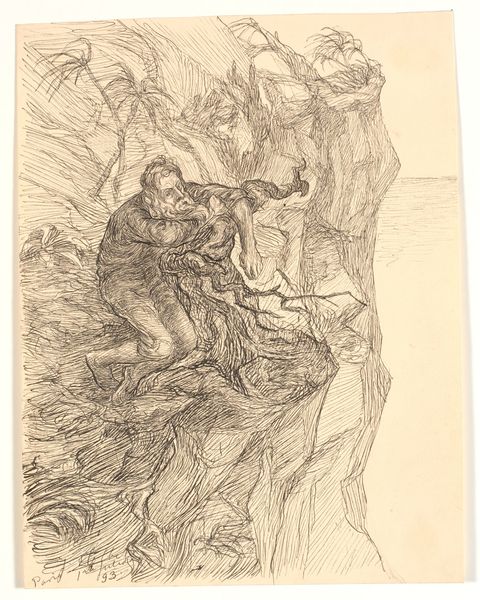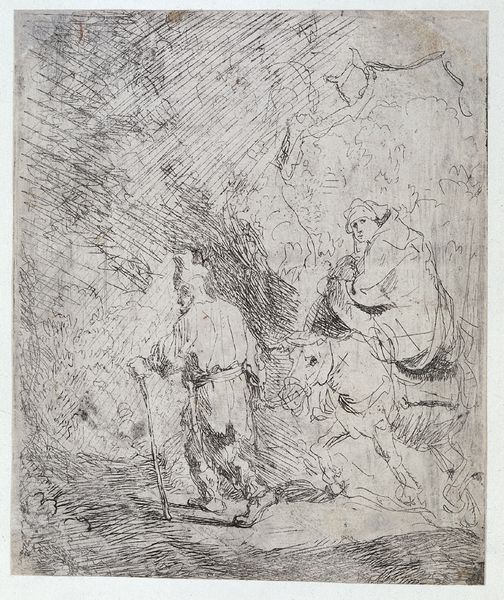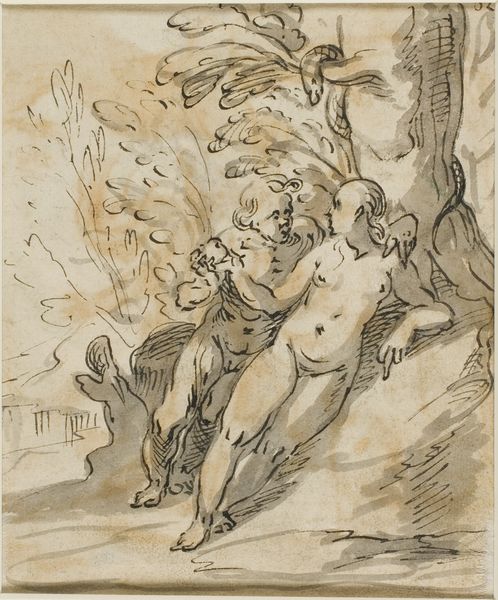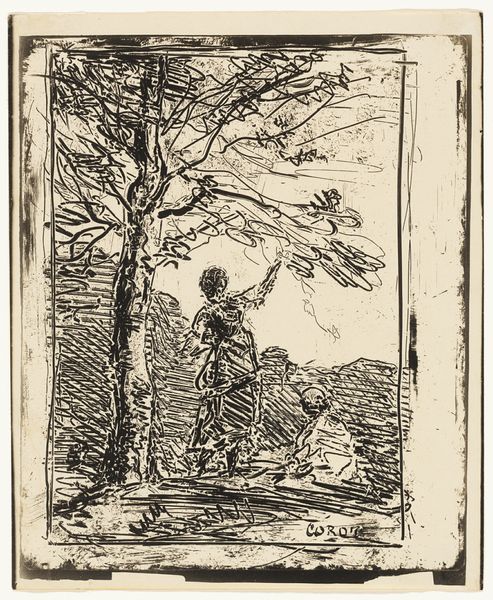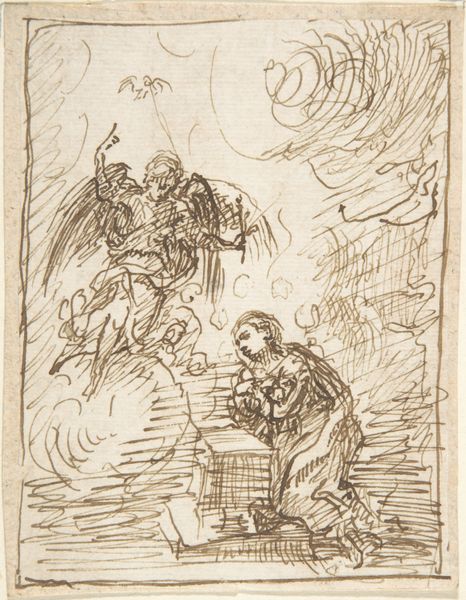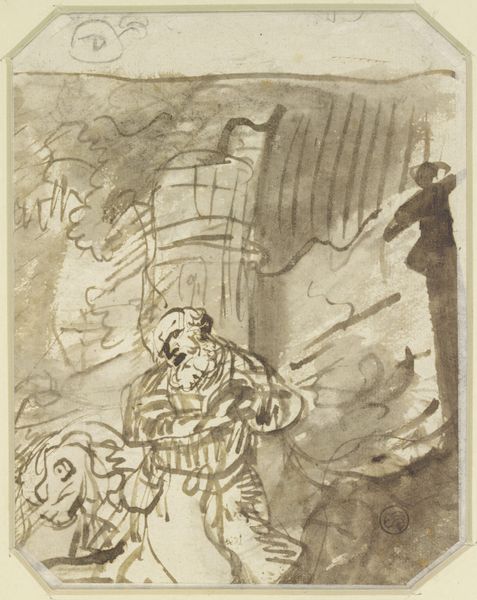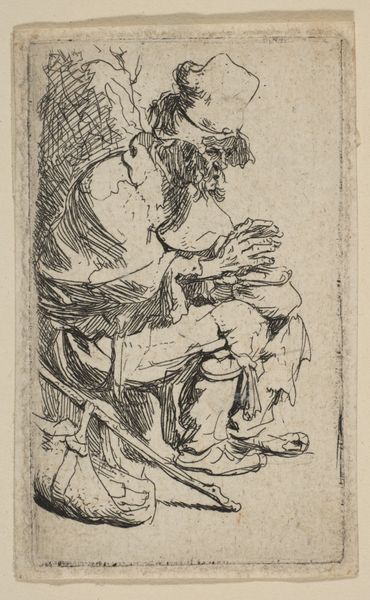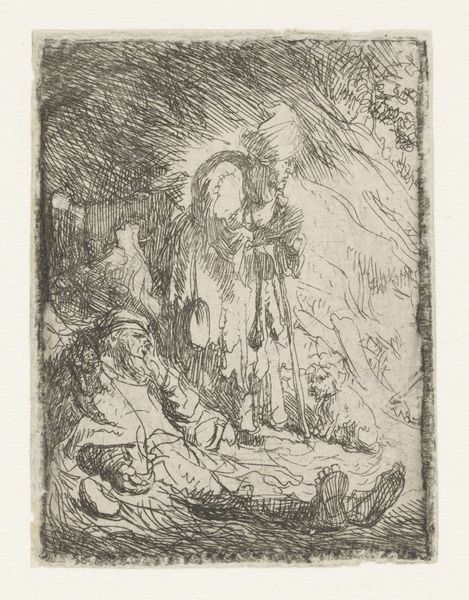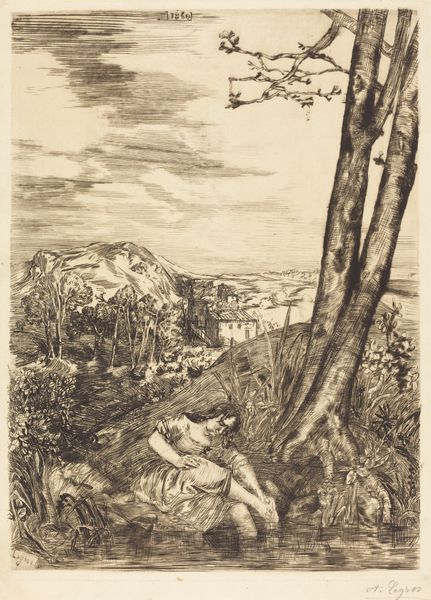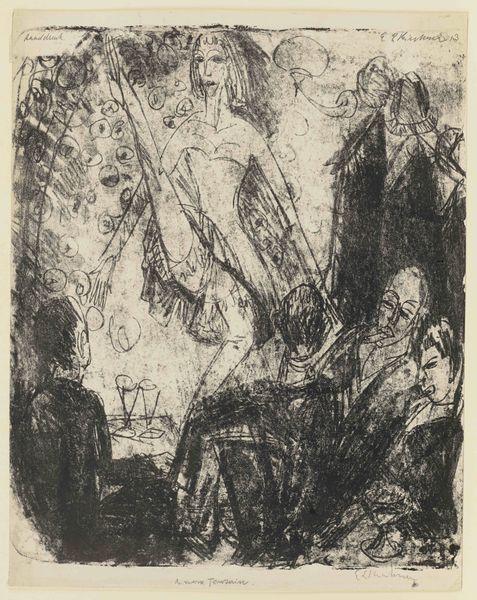
drawing, ink, pen
#
drawing
#
baroque
#
pen sketch
#
landscape
#
etching
#
ink
#
pen-ink sketch
#
pen
#
genre-painting
Dimensions: overall: 29.2 x 19.6 cm (11 1/2 x 7 11/16 in.)
Copyright: National Gallery of Art: CC0 1.0
Curator: This pen and ink drawing, titled "Desert Landscape with a Hermit (verso)," comes to us from Hermann Weyer, created sometime between 1615 and 1620. Editor: My first thought is desolation. The monochromatic ink work creates a bleak atmosphere; a somber tone underscores everything here. The figure, hunched and solitary, just amplifies that feeling. Curator: Yes, the application of the ink, the varying weights of line, creates this sense of drama. Observe how Weyer uses the density of lines to define form and shadow, particularly around the figure and the trees. The repeated, almost frantic strokes add to the expressive nature. Editor: I'm curious about this hermit. Was Weyer exploring a broader contemporary interest in religious withdrawal or perhaps commenting on social isolation during that time? The Baroque period was, after all, a period of immense religious and political upheaval. Curator: It’s possible, but let's also consider the compositional elements. The hermit is placed in the foreground, but his bowed head almost blends into the shadows. He is part of the landscape rather than dominating it. It prompts us to consider humanity’s place within the natural world. Look at how Weyer contrasts textures, juxtaposing the rough lines suggesting foliage with the smoother surfaces implying water. It’s this dynamic that truly captures the eye. Editor: Good point. And I think placing him there underscores not the figure's individual drama, but something broader. What does it tell us, thematically, about humankind's place? The landscape itself becomes a stage for larger societal concerns or reflections about human insignificance when cast against nature. Curator: Absolutely. This piece goes beyond just representing a scene. It creates a visual poem of form and emotion. Editor: Ultimately, thinking about art through that historical lens allows me to see this hermit, this landscape, less as an isolated figure but as part of ongoing conversation about individuals in broader societal constructs and landscapes. Curator: Indeed. The interaction between artistic technique and historical interpretation allows a deeper appreciation.
Comments
No comments
Be the first to comment and join the conversation on the ultimate creative platform.
